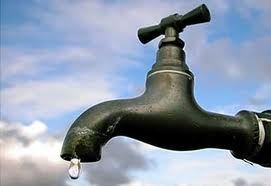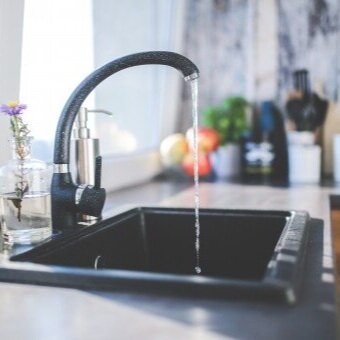Learning the Effect of a Damaged Faucet
Learning the Effect of a Damaged Faucet
Blog Article
Everyone has got his or her own piece of advice in relation to Health Risks Posed by Leaking Faucets.

Intro
A leaking faucet could appear like a small aggravation, but its effects extend far past the periodic drip. Recognizing the results of a dripping tap is essential for both homeowners and the setting. In this post, we'll explore the numerous effects of this common home concern and why resolving it promptly is important.
Causes of Leaky Faucets
Leaky faucets can arise from a range of elements, including damage, high water stress, and rust. Over time, the continuous use of taps can result in worn-out seals and gaskets, causing leaks to create. Furthermore, excessive water pressure can place strain on plumbing components, causing leaks. Deterioration and rust can additionally compromise tap components, making them susceptible to leak.
Water Wastefulness
Among the most substantial consequences of a dripping faucet is water waste. Even a little drip can amount to gallons of wasted water gradually. This not only increases water expenses but likewise adds to water shortage and environmental deterioration. Addressing dripping taps quickly is critical for preserving this priceless source and decreasing its influence on the planet.
Financial Impact
Along with drainage, leaking faucets can also have a considerable financial influence. Enhanced water bills are a straight effect of water wastefulness, setting you back home owners numerous dollars each year. Furthermore, the price of fixing water damages caused by leakages can be significant, specifically if left neglected for a prolonged duration.
Ecological Influence
The ecological influence of leaking taps extends beyond water wastage. By conserving water, home owners can contribute to wider efforts to mitigate water scarcity and protect natural environments. Lasting alternatives such as rainwater harvesting and water-efficient components can further lower the ecological impact of home water use.
Technological Solutions
Innovations in innovation have caused the growth of smart faucets and water-saving gadgets that help lessen water waste. Smart taps make use of sensing units to identify movement and change water circulation accordingly, minimizing waste without giving up ease. Water-saving tools such as aerators and low-flow showerheads are also effective in saving water without compromising efficiency.
Worldwide Perspectives
While leaking faucets may seem like a localized concern, they contribute to broader global challenges such as water shortage and environment modification. In regions already facing water tension, every decrease counts, making leakage avoidance and fixing essential. By taking on water-saving practices and investing in lasting innovations, house owners can play their part in addressing these pushing global concerns.
Regulatory Measures
Government policies play a vital function in minimizing the influence of dripping faucets and promoting water preservation. From building codes that need water-efficient components to water-saving incentives and refunds, policymakers have a variety of devices at their disposal. By executing and implementing these regulations, governments can make sure that property owners focus on water conservation in their lives.
Community Influence
Attending to leaking taps needs cumulative initiatives at the community degree. By increasing understanding regarding the relevance of water preservation and offering resources for leakage discovery and repair service, neighborhood authorities can equip home owners to do something about it. Campaigns such as water-saving refund programs and leak detection projects can incentivize behavior change and promote responsible water usage.
Situation Studies
Real-life examples of the effect of dripping taps emphasize the importance of proactive maintenance and timely repair services. From water damages to increasing water expenses, the repercussions of neglecting leakages can be serious. By sharing these case studies, property owners can better understand the significance of addressing leaky taps without delay.
Educational Campaigns
Educational projects play a crucial role in elevating recognition about the effects of dripping taps and advertising water conservation practices. Via workshops, workshops, and on the internet resources, property owners can learn how to detect and fix leakages themselves. By empowering people with expertise and tools, instructional projects can foster a society of accountable water usage within communities.
Wellness Worries
Leaky taps can produce conducive settings for mold and mildew and mildew development, posing health dangers to occupants. The visibility of mold can aggravate breathing issues and allergic reactions, particularly in at risk people. Additionally, water damages resulting from leakages can compromise the architectural stability of buildings and result in costly fixings.
DIY vs. Specialist Repair work
When confronted with a leaky tap, homeowners usually discuss whether to attempt repairs themselves or hire a specialist plumber. While DIY fixings can save money, they might not always resolve the underlying concern properly. Expert plumbers have the proficiency and tools to identify and take care of leakages properly, making sure lasting options and assurance for homeowners.
Preventive Measures
Stopping dripping taps needs regular maintenance and positive procedures. Easy tasks such as replacing damaged washing machines and seals can prevent leaks from creating. In addition, upgrading to premium components and reducing water pressure can aid lengthen the lifespan of faucets and reduce the danger of leaks.
Conclusion
In conclusion, the results of a leaky tap extend far beyond the occasional drip. From water wastage and raised water bills to health and wellness worries and ecological impact, the effects of neglecting leaks can be substantial. By addressing leaking faucets immediately and embracing water-saving techniques, homeowners can mitigate these effects and contribute to an extra lasting future.
Why You Shouldn’t Ignore a Leaky Faucet in Your Home
What Causes a Leaky Faucet?
Various factors can cause a leak, from loose and worn-out parts to corrosion. Your faucet has four essential components from which most plumbing issues will stem: the O-ring, the valve seat, the washer and the gasket.
What Is an O-Ring?
The O-ring is a stem screw that fastens parts of the faucet in place, preventing water from leaking out of the spout. Depending on your faucet type, the stem might have multiple O-rings. Water will drip from the faucet’s handles and base if this part breaks or deteriorates.
What Is a Valve Seat?
The valve seat controls the flow and temperature of the water. Found at the base of the handle, it works as a seal for the faucet’s stem. The valve seat ensures the water is allowed to flow or is blocked as the handles dictate. You’ll know it’s malfunctioning when water leaks from your faucet’s sides.
What Is a Gasket?
The gasket is found between the water inlet and the valve stem. It creates a seal between the faucet and the sink, holding its joints by aerators attached to the stem’s head. Water will trickle out from the base if the gasket isn’t working.
What Is a Washer?
The washer secures the handles and prevents leakage, serving a similar purpose to the O-ring. While the O-ring is ordinarily round and made from an elastic material, such as rubber, the washer is square-shaped and composed of brass, copper and other hard metals. If it malfunctions, corrodes or has been improperly installed, water will leak out of the handles, causing that incessant faucet drip.
Why Is a Leaky Faucet Dangerous?
A leaky faucet left alone for too long can have significant consequences.
Pest Infestations
Since bugs and rodents gravitate towards the scent of water, a leaky faucet will draw pests to your sink. Both are looking for leaks accessible through crawl spaces, which a faucet provides. If you leave water dripping for too long, you run the risk of an infestation.
Rust
If one of the faucet parts has started to corrode, the resulting rust can spread to your pipes and valves with startling speed. The rust might even lead to cracks or other impairments, resulting in more severe plumbing issues.
Your sink could also sustain damage from a leaky faucet. The water in your tap possesses sparse elements of calcium and iron that can stain your sink with repeated and prolonged exposure. Once those elements in the water have been open to the air for some time, your sink will start to rust, creating marks that can be difficult to remove.
https://www.tomsmechanical.com/blog/why-you-shouldnt-ignore-a-leaky-faucet-in-your-home

I was made aware of that write-up on through an associate on our other website. Enjoyed reading our write up? Please share it. Let another person locate it. Thanks so much for your time invested reading it.
Report this page